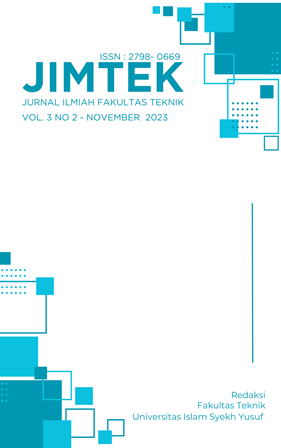Analisa Pengaruh Putar Balik (U-Turn) Terhadap Kinerja Lalu Lintas (Studi Kasus :Jalan Gatot Subroto, Kota Tangerang)
DOI:
https://doi.org/10.33592/jimtek.v3i2.4104Abstract
Tangerang City area is one of the areas in Banten Province which is right on the west side of DKI Jakarta, the capital city of Indonesia. Tangerang City is one of the largest cities in the JABODETABEK. With the increase in population mobility, the higher the traffic flow, the more traffic that causes congestion, because the number of vehicles is always increasing and not matched by the expansion of the area. To improve safety and comfort and also minimize traffic problems on the road, a median can be made. One of the influences when making a U-Turn is when the vehicle speed will slow down or stop for a moment. Seeing this problem, it is necessary to analyze the influence of the distance between U-turns that occurs on Gatot Subroto street, Tangerang City. In tihs study the authors used a quantitative method where the authors obtained numerical data from direct observation. Based on results of the study, it is shown that the distances between the U-Turns that are very close together causes vehicles that cross the road to be hampered by their journey, then the highest average daily traffic volume peak is 2951,1 smp/jam which occurs on Monday at 18.00-19.00. traffic flow performance on the eastbound Gatot Subroto road section has the highest degree of saturation of 0,94 with the class E road service level category, while for the west direction has the highest degree of saturation of 1,05 with the class F road service level category.








